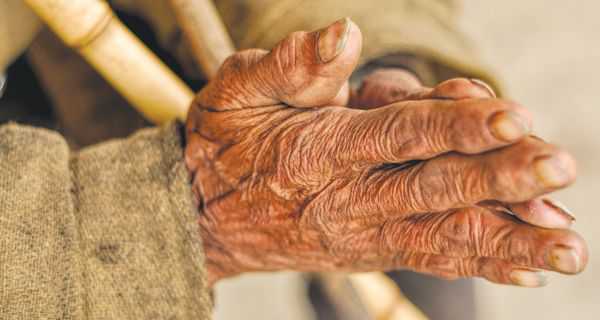India ageing fast; Punjab, Himachal in lead
Aditi Tandon
Tribune News Service
New Delhi, July 4
With India set to witness a sharp slowdown in population growth over the next two decades, Punjab and Himachal Pradesh are among states that will start transitioning to an ageing society by 2030s as the proportion of the young in their population declines from already low fertility rates.
In the same bracket will be the southern states, West Bengal and Maharashtra, where fertility rates have already dropped below the replacement level.
The Economic Survey 2018-2019 records alarming demographic trends and notes that the share of India’s young (0 to 19 years) in the overall population has begun to decline and is projected to drop from 41 per cent in 2011 to 25 per cent in 2041.
On the other hand, the share of the elderly (60 years and above) in the population will rise rapidly from 8.6 per cent in 2011 to 16 per cent by 2041. These changes have major implications for policymakers, with the Survey suggesting raising the retirement age and merging schools as there would be less children.
Projections by the Indian Institute of Population Studies also say that India’s demographic dividend will peak around 2041 when the share of its working age population (20 to 59 years) will hit 59 per cent.
“As the demographic composition of states changes and fertility continues to decline, India’s age structure by 2041 will resemble that of China and Thailand in the current decade,” says the Survey.
The changes are being fuelled by rapid falls in overall fertility rates across India, with states like Punjab already reaching the total fertility rate (TFR) of 1.7 in 2016. Projections say that through 2021-41, TFR at the national level (which is 2.3 today) will continue to decline and will fall below the replacement level at 1.8 around 2021, stabilising at 1.7 later.
States with TFR already below replacement level (2.1) like Punjab, Himachal, West Bengal, Maharashtra and southern counterparts are projected to see further decline in fertility rates by 2021.
This would mean Punjab, Himachal and south India, which are leading the demographic transition today, will also lead the nation’s transition to an ageing society.
“This will happen because states ahead in demographic transition will see a decline in population growth rates, which could near zero rates by 2031-41,” IIPS experts say. Even nationally, population growth has been clowing from 2.5 per cent during 1971-81 to 1.3 per cent in 2011-16.
IIPS says the size of elementary school-going children will drop sharply in Punjab, HP, Uttarakhand, TN, Maharashtra, Andhra Pradesh and Karnataka by 2041.
Indians over the age of 60
2011 —10.42 cr
2041 — 23.94 cr
Fertility rate dropping
Average annual population growth rate declining in India — 2.5% in 1971 to 1.3% in 2011-16
Population growing below 1% annually in southern states, West Bengal, Punjab, Maharashtra, Himachal, Odisha, Assam
Key driver is decline in total fertility rate (number of kids a woman bears in her reproductive life)
States already below replacement level fertility (southern states, Bengal, Punjab, Maharashtra, HP) will see further decline by 2021 and near zero growth rates of population by 2031-41
RAISE RETIREMENT AGE
Seems inevitable due to increase in life expectancy
NUMBER OF YOUNG TO DROP
Working-age population will grow roughly...
2021-31: 97 lakh per year
2031-41: 42 lakh per year
The share of India’s young population, i.e. in the 0-19 age category, has already started to decline and is projected to drop from as high as 41% in 2011 to 25% by 2041
Merge, not open, schools
- Survey says number of school-going children will decline by 18.4% between 2021 and 2041
- Number of children in the 5-14 age bracket will decline significantly, leading to the need for school mergers and less focus on building new ones
- Already, states such as Himachal Pradesh, Uttarakhand, Andhra Pradesh and Madhya Pradesh have fewer than 50 students enrolled in more than 40% of their elementary schools, according to the study









